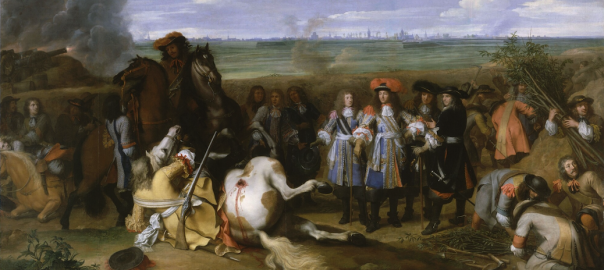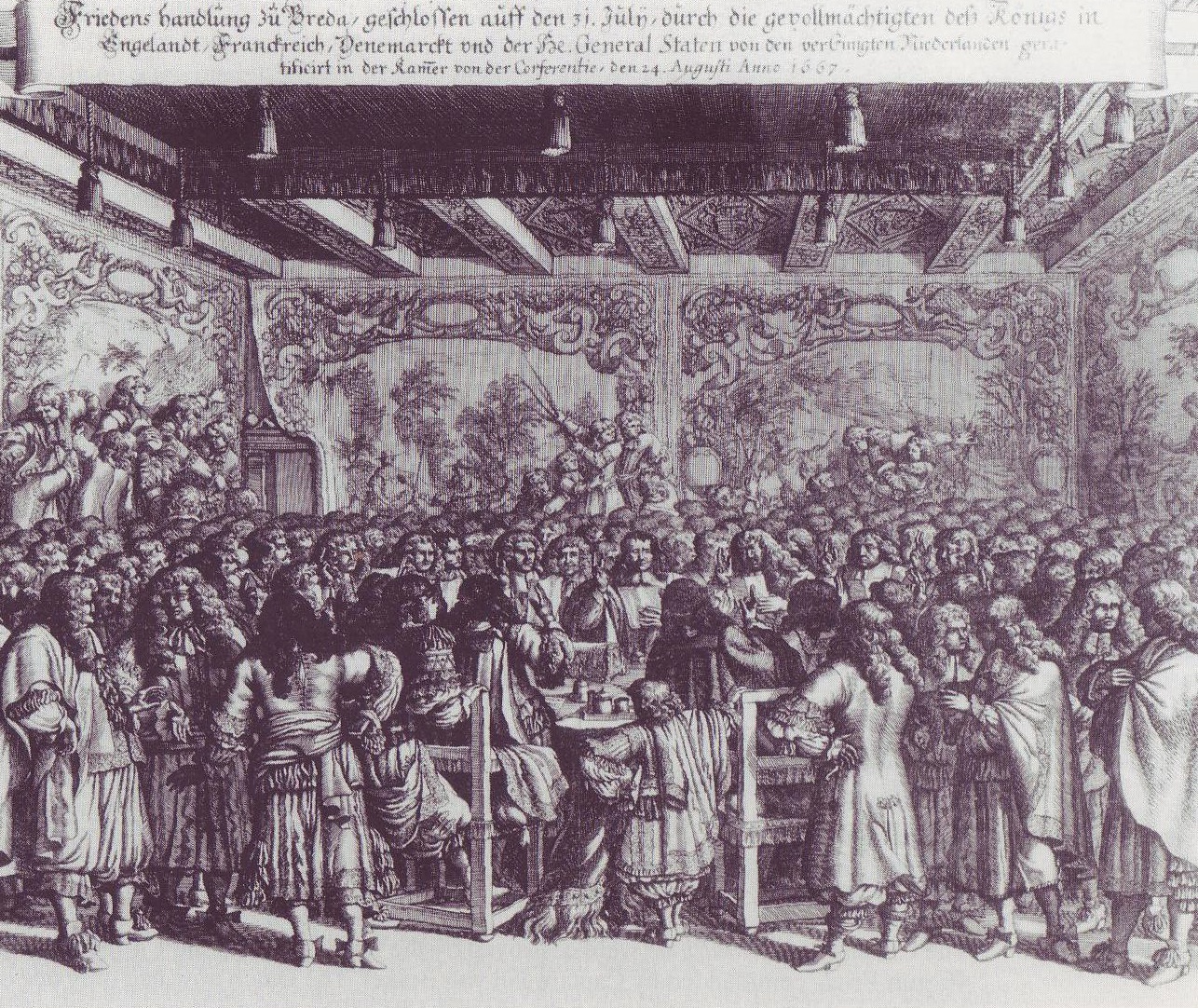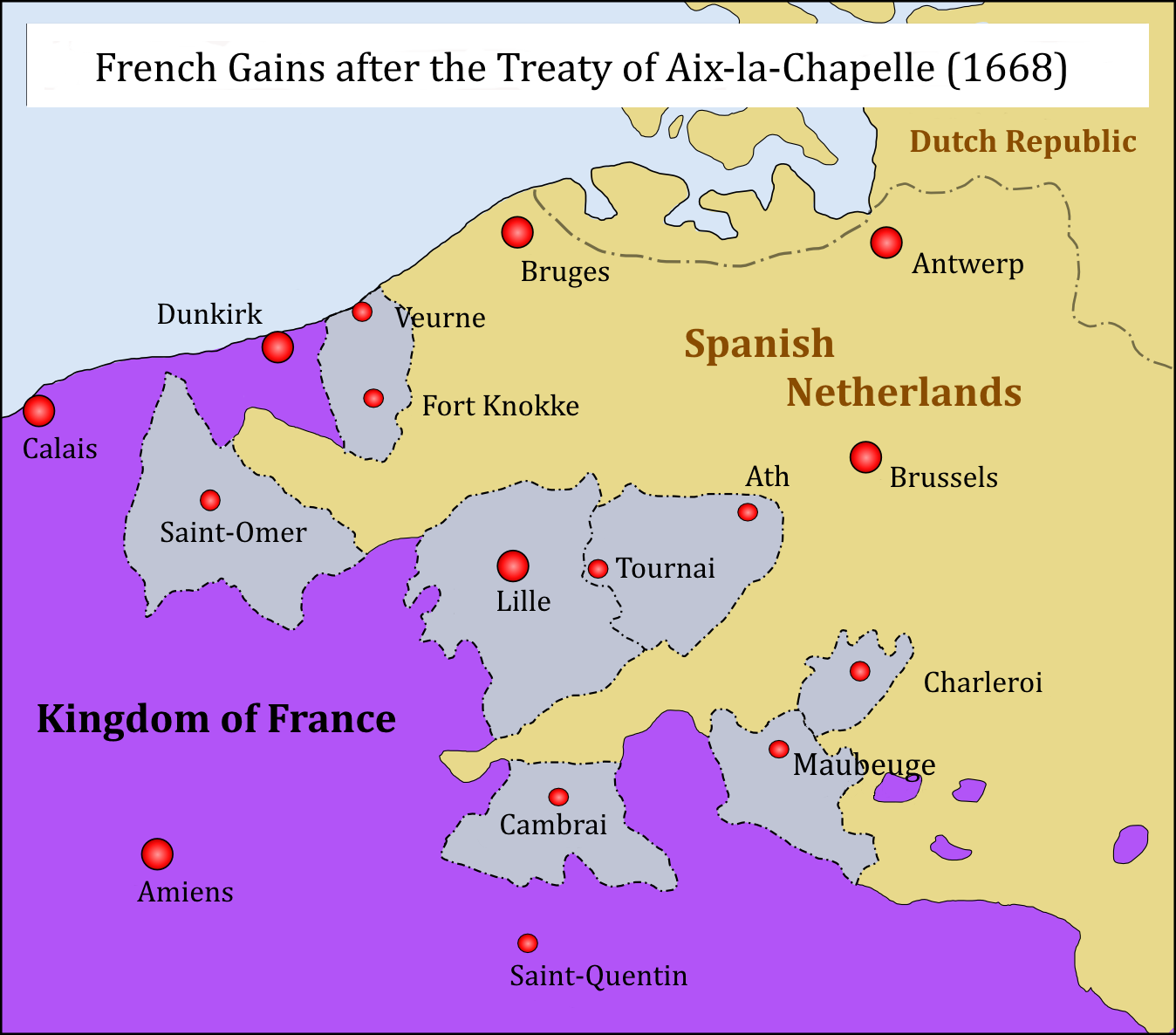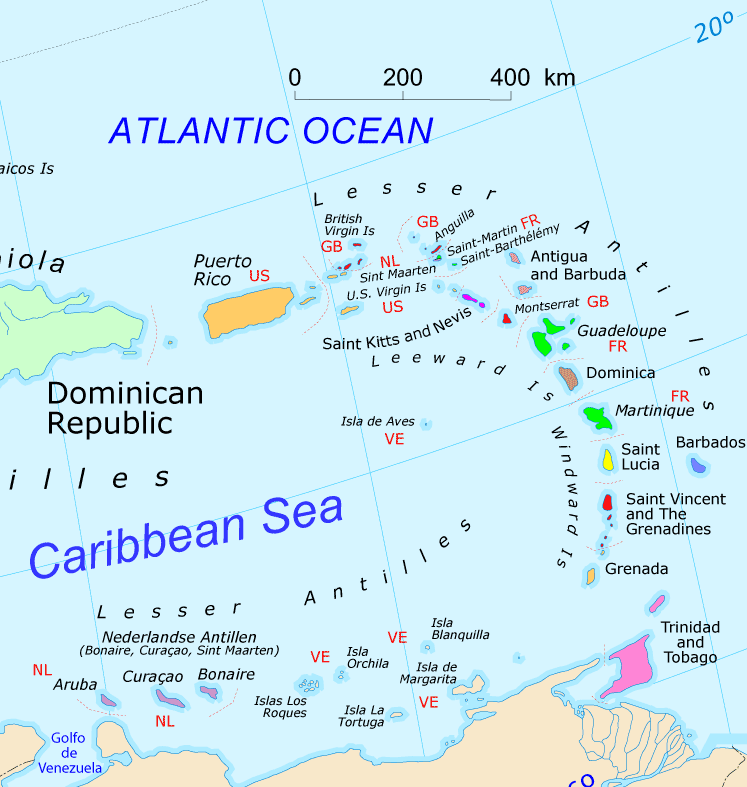Here I am, wanting to put together a history of how exactly the “West”, that is, essentially a handful of West-European nations, came to dominate the world via their domination of numerous trans-oceanic shipping routes, and to make this determinedly not a West-centered narrative… But time and again I find I have to come back to arcane details of arguments, wars, and rapidly shifting alliances occurring among the West European nations themselves. There are a number of reasons I have to do this:
- These quarrels among the West European nations were having, obviously, big repercussions in the non-European areas that some of them were coming to dominate.
- By the mid 17th century, it had become very clear to leaders in West European states that having control of a transoceanic empire was a big source of strength for them in their intra-European battles. The hyper-profits they could make through colonial plundering and rapine helped them to fund the armed forces with which they waged their wars at home– and additionally, the fighting and navigational skills they gained through building and running their empires could also serve them well in the wars they fought in Europe and its seas.
- But that latter factor was a two-way street. European powers that fought a lot of wars (including big naval battles) at home were then very well-honed for additional expansion of their empires overseas… Recall , if you will, that back in the 1400s and early 1500s CE, first Portugal and then Spain were well able to launch their early colonial projects precisely because of the fighting they had engaged in on their home peninsular in order to expel the Muslim city-states from it. As I remarked in some of my early bulletins here: It was was Portugal and Spain’s successive Reconquistas (of Iberia) that had led to their Conquistas (of West Africa, the East Indies, the Americas, and so on.)
And in 1667, these features of the Western-dominated world were all thrown into sharp relief. Specifically, in that year, the English and Dutch decided (for largely tactical reasons on both sides) to bring to an end the fierce war they had been fighting in the seas between them since 1665– but not before each side got in a final jab at the other… (And that rivalry between them in the North Sea had a LOT to do with the rivalry between the pugnacious empires each was working hard to build on distant continents at the time.) Also in 1667, France’s King Louis XIV, who had large aspirations to become a large power not just in Europe but also worldwide, went to power against Spain’s remaining positions in the Netherlands.
Would the fighting among these fractious little powers all perched on the Atlantic coast of Europe never stop? No, not, it seems until nearly 300 years later…
So I’ll cover both of those developments as speedily as I can. Then, I’ll take a look at what was happening in Barbados and its neighbors in 1667, a year when the English Governor of Barbados decided he wanted to expand his island colony’s hyper-profitable system of mass-scale sugarcane planting worked by uprooted and transported enslaved Africans to some of the other islands in the Lesser Antilles.
End of the Second Anglo-Dutch War
In July 1667, England’s King Charles II concluded the Treaty of Breda with the States-General (essentially the Parliament) of the Netherlands, bringing to an end the war the two countries had been fighting since since 1665.
English-WP tells us this about how this treaty came about:
By late 1666, Charles was short of money, largely due to his refusal to recall Parliament, while English trade had been badly affected by the war and domestic disasters. In contrast, the Dutch economy had largely recovered from its post-1665 contraction, while public debt was lower in 1667 than 1652; however, naval warfare was enormously expensive and financing it a challenge even for the Amsterdam markets. Both sides wanted peace, since the Dutch had little to gain from continuing the war and faced external challenges from competitors. Denmark resented concessions imposed at Christianopel in 1647, while the WIC’s confiscation of Danish ships was an ongoing source of dispute; in early 1667, [Denmark] joined Sweden and France in imposing tariffs on Dutch goods, impacting the Baltic grain trade.
There was, as always in those peace talks in those years, much to and fro over where they would be held, and who would mediate them. In the end they decided on Breda, in southern Netherlands, for the place, and Sweden for the mediator.
Negotiations were already underway when, in late May, France’s Louis XIV complicated matters by launching his war to seize the Spanish Netherlands. This increased the pressure on the Dutch to reach a speedy peace with England, since France’s expansion in their direction was bad news for them. But England’s King Charles was also in a very bad situation, very short of cash and still reeling from the 1666 Fire of London.
So the final details were all ironed out and the treaty signed on July 31. Here were the terms:
Article 1 of the treaty stipulated a limited military alliance, obliging fleets or single ships sailing on the same course to defend each other against a third party. Article 3 established the principle of uti possidetis, or “what you have, you hold”, with an effective date of 20 May. [That applied, of course, to their respective empires.] The Dutch regained Surinam, now part of modern Suriname, while the English kept New Netherland…
Articles 4 to 8 applied the same principle to losses of goods or ships, including those that occurred before the war. No indemnities could be levied or punishments imposed, but all existing Letters of Marque were declared void…
Article 10 required all prisoners to be exchanged without ransom although the Dutch later demanded reimbursement of their living expenses, which the English viewed as the same thing. After their failed 1666 coup [against the Dutch Grand Pensionary John de Witt], many Orangists sought refuge in England, with English and Scots dissidents going the other way. In Articles 13 and 17, both sides undertook not to protect each other’s rebels; in a secret annex, the Dutch undertook to extradite regicides who voted for the Execution of Charles I in 1649, although in practice these provisions were ignored.
A separate treaty amended the Navigation Acts; goods transported along the Rhine or Scheldt to Amsterdam could be carried by Dutch ships to England without being subject to tariffs…
Later, England concluded follow-on treaties with France and Denmark that followed the Anglo-Dutch version in waiving claims for restitution of losses. The Anglo-French treaty included some settlement of claims against each other in the Americas:
England returned the French possessions of Cayenne and Acadia, captured in 1667 and 1654 respectively, but the exact boundaries were not specified, and the handover was delayed until 1670. England regained Montserrat and Antigua, with the Caribbean island of Saint Kitts divided between both countries.
English-WP also notes this about the fall-out from the Treaty of Breda: “Breda was the point when the English and Dutch came to view France as a greater threat than each other.”
And so it went on… What a bunch of war-like tribes these were.
France attacks Spanish Netherlands
The details of this war, which lasted from May 1667 through May 1668, are too arcane for me to spend much time on. Let’s just note that Spain’s power, in Europe and globally, had been fading for some time, and Spain was now effectively being ruled by the Queen Regent, Mariana, whose son was still a minor… whereas in France Louis XIV was really coming into his own and eager to flex his military muscles both in Europe and worldwide.
In early 1667 he declared that because of some long-ago unpaid dowry the Spanish Netherlands really should belong to him.
English-WP notes this about France’s capabilities:
After 1659, a series of military reforms initiated by Michel Le Tellier made the French army more professional, while improving its logistic support. This allowed them to put larger numbers in the field, for longer periods; by 1667, the army had an authorised strength of 80,000, of whom 51,000 were deployed for the campaign.
So various French battalions started moving toward various fortified towns in the Spanish Netherlands area:
Aware of these preparations, Spanish governor Castel Rodrigo urgently requested additional funds from Madrid. Despite spending the enormous sum of 1.5 million escudos on her daughter’s wedding, Mariana managed to increase the forces available to him from 11,000 in mid 1666 to 27,000 by April 1667.
Although insufficient to defend every position, the Spanish did not need to do so. Given time, it was accepted even the strongest fortifications would fall and their primary purpose was to delay, while the defenders mobilised reserves or found a diplomatic solution. Capturing towns was relatively easy, holding them far harder, since every garrison weakened the field army; over the next century, the French confronted this strategic dilemma time and again in this theatre.
Anyway, the Spanish lost various cities over the months that followed. Then this:
With the largest army in Europe, Turenne, [and other French officials] argued for continuing the war. Colbert [and another group of French officials] recommended peace, primarily on financial grounds; the 1660s was a period of significant economic decline, and war was expensive. France was unprepared for a naval war against the Dutch and English, and while Colbert had initiated policies aimed at reducing its dependence on Dutch shipping for transporting goods, this would take time.,,
In February, The 7-year-old Spanish king] Charles was reported to be suffering from smallpox, an often fatal disease; his death would give Louis a good chance of achieving his objectives without fighting. The combination decided him on peace; on 25 April, the Treaty of Saint Germain, between France, England and the [Dutch] Republic, finalised terms, which were then incorporated into the Treaty of Aix-la-Chapelle, signed by Spain and France on 2 May.
In the peace treaty, France retained eleven of the cities it had taken but ceded Saint-Omer, Cambrai, and a place called Aire back to Spanish/Habsburg control. What the French kept helped them strengthen their northern border. WP tells us that Louis’s next move was to begin planning a war against the Dutch Republic. Sigh.
The banner image above is a detail from a painting of Louis XIV visiting the battle-front at Douai.
Governor of Barbados wants to expand his bloody system to other islands!
William Willoughby (“Lord Willoughby”) had been elected to the post-Restoration “Convention Parliament” in London and had srrved as “commissioner for plantations” from 1660 until 1667. In 1667, he was appointed Governor of Barbados. He came to the position with ambitious plans to expand Barbados’s ugly but extremely profitable plantation system to other islands in the “Windward” chain of the Lesser Antilles.
The main obstacles in his path that year were not competing claims from other European powers with colonial ambitions in the Caribbean. (Both France and Spain were pretty busy on their home continent.) The main obstacl;es were the native peoples of the region, the Kalinagos and to some extent also the growing groups of African -origined peoples who had escaped from their enslavement and in many cases had made common cause with the Kalinagos. There had been escaped Africans in the region for so long, and so many had intermarried with the Kalinagos that the communities of mixed-race people from those encounters had their own name: Karifunas.
The great West Indian historian Prof. Sir Hilary Beckles notes in p.29 of his book Britain’s Black Debt that the contemporary French observer Pere Labat had written that in the middle of the 17th century on the Kalinagos started refusing to return escaped Africans to their enslavers, regarding them instead as “an addition to their nation.” Beckles added that Labat had estimated that in 1670, “over five hundred African escapees from Barbados were living in St. Vincent.”
In 1667, many of the Windward Isles were still being firmly defended against European intrusion by their Kalinago/Karifuna residents. Beckles wrote (p.30-31) that the big planters on Barbados had been wanting to expand their operations “since the 2630”, and that in 1666, the Kalinagos had been tricked into signing away by treaty their “rights” in inhabit Tortola, in today’s British Virgin Islands, and had been driven off the island.
So then, this happened (Beckles, p.31):

Anyway, the attempts by the English colonists in the Lesser Antilles to hunt down and exterminate the threat posed by the Kalinagos and their allies continued for many decades. Beckles writes (p.35) about “The final defeat of the Karifunas in St Vincent and St Lucia during the 1790s…”
But let me not get too far ahead of myself here.




